Alright – so today we’ve got the honor of introducing you to Julia Saulė Goodman. We think you’ll enjoy our conversation, we’ve shared it below.
Hi Julia Saulė , thanks for joining us today. We’d love to have you retell us the story behind how you came up with the idea for your business, I think our audience would really enjoy hearing the backstory.
I’ve always had a passion for vintage things, especially vintage jewelry. Growing up, I was taught by my mother and grandmother to make the most out of what we had. They showed me how to give forgotten things a new life, whether it was through up-cycling, repurposing, or simply treasuring the craftsmanship of older objects. This mindset of sustainability and creativity has stayed with me, and it’s a core principle with how I live and is present in my work today. I am a collector of old precious things, especially jewelry, ever since I was a child. These little trinkets hold a lot of sentimental value to me. As I got older I got into maximalism and started to wear and layer the pieces I collected. I’d struggle with the chains getting tangled or getting everything to layer evenly. So, I got some basic tools and decided to create my first charm necklace, combining various pendants onto a single chunky chain.
Shortly after, my mom gave me some broken jewelry—I took apart those pieces, combining them with others I found at flea markets and antique shows, and started creating. The more pieces I made, the more I fell in love with jewelry making. I also discovered my love for pearls, especially those with organic, imperfect silhouettes as well as funky shapes like crosses, fish bones, stars, and even chicken feet shapes. The pearls and old jewelry charms felt so much more interesting to me than perfectly made or mass-manufactured ones—they had character.
This concept of up-cycling not only aligned with my personal values of sustainability, but also with my passion for honoring the craftsmanship of the past. The quality of vintage items tends to be superior to most mass-produced products today, and by sourcing materials secondhand, I could also support small businesses. What excites me most is the uniqueness of every piece I create. Since most of my materials are vintage, each necklace is truly one-of-a-kind. The creativity and connection to the past that goes into each item are what makes it special. What started as a small hobby has grown into a business. For me, it’s not about having a structured business plan; it’s the passion and excitement for creating something unique and special that has made this endeavor successful. I love making jewelry for all types of people- no matter their age, gender, or style. Being able to pass down snippets of my childhood in the form of beads and charms is a wonderfully fulfilling experience.
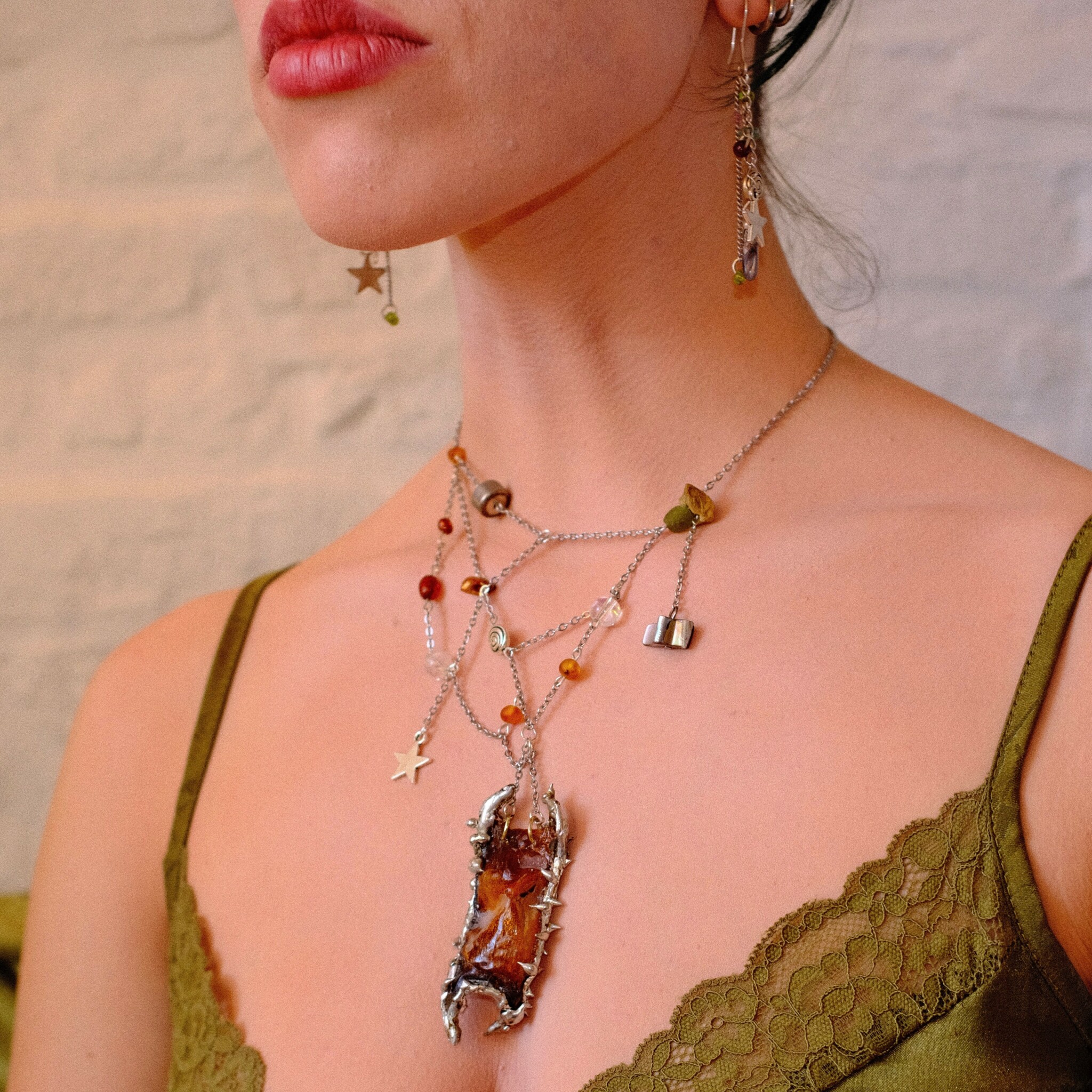
Great, appreciate you sharing that with us. Before we ask you to share more of your insights, can you take a moment to introduce yourself and how you got to where you are today to our readers.
When I started making jewelry I didn’t go in with the intention of it becoming a full-fledged business. I studied fine arts at Columbus College of Art & Design, with a focus on large-scale oil paintings. My two thesis shows explored Lithuanian culture (family history, folk art, nature, etc) as well as themes of self-exploration and identity (gender, queerness, processing traumas, and growth). My transition from painting to jewelry was unexpected. What started as small projects—like repairing and reinventing my mom’s old jewelry—turned into a hobby that eventually became my business. Now, I create sustainable, one-of-a-kind jewelry pieces that carry stories. Each piece is made with love, using mostly vintage or secondhand materials. My customers are finding necklaces that are not only unique but also meaningful and eco-conscious. People want pieces that resonate with them personally—something special that reflects their personality and values.
The story behind each piece, connection to the materials I work with, and attention to detail creates a unique approach to my craft. I love curating an idea that is eclectic and timeless by blending history with the new. I’m proud of how my jewelry connects with a broad spectrum of people- of all ages, genders, and tastes. It makes me so incredibly happy when a child will pick out a piece with their parent, because the pieces they choose are often with beads or charms from jewelry I wore as a child. It’s a beautiful feeling to know that these pieces that hold memories for me will create new ones for someone else.
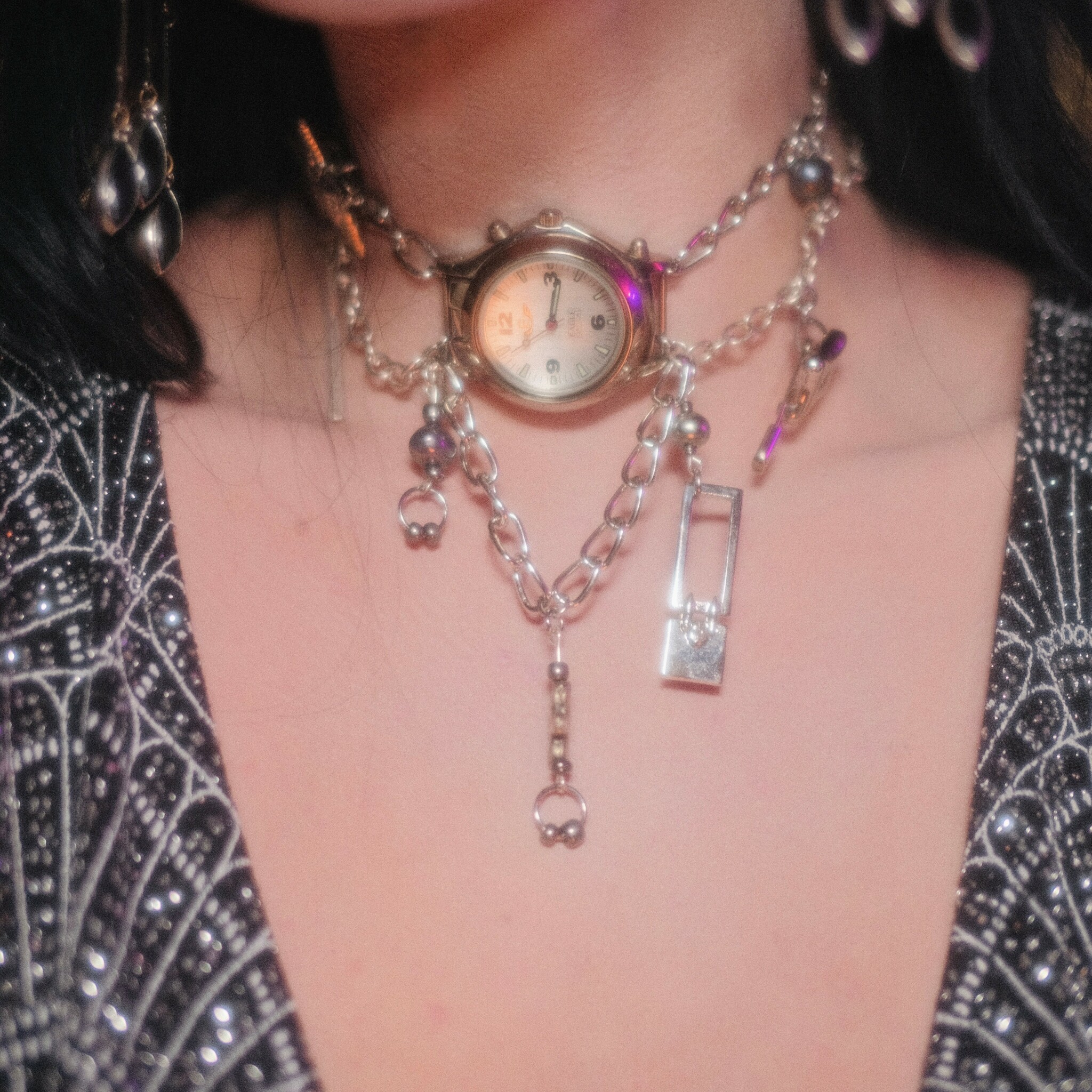
How did you build your audience on social media?
Building an audience on social media always takes time and a little bit of luck. It helps that before creating @saules.shop I have multiple other existing accounts on Instagram for my various other facets of life- personal + photography (@julia.saule), painting (@saule.art), ceramics (@saule.ceramics) and thesis portfolio (@saule.thesis). It’s important to be authentic and to have consistency with an online presence, for example posting at least once a week, frequently posting to stories, reminding your audience of upcoming events, and showcasing new products. The balance of having consistency in posting but keeping things fresh and innovative is important to keep in mind. The algorithm will boost any posts with faces to people; so even though I want to post solely my work, I sprinkle in photos that include myself at pop-up events or modeling my pieces. People like seeing the face of the brand, and I find it helps to show more of my personality and style in the things I post. It also helps to have people other than yourself wearing your work— at the end of a pop-up event I’ll post photos of customers wearing my work and of my setup, I’ll ask friends to model, or I’ll repost customers wearing things they’ve purchased from me. This shows that your business is out there flourishing, shows your demographic, and shows your online audience what your setup and overall aesthetic looks like for your brand. Outside of posting about markets it’s a must to show high quality, well-lit photos of product. Beyond social media it’s important to have product available to purchase on a website- right now all of my work and vintage clothing I collect and sell are available on Depop but I have also used Etsy in the past. Once my business has reached a larger scale I will be creating a website for the jewelry!
Online my core audience consists of mostly young queer people but when I vend at pop-up markets my demographic branches out to people from all walks of life. I like having an overall core aesthetic for my brand, but I also want my jewelry to appeal to everyone. Recently I’ve been making more masculine style necklaces to encourage everyone to decorate and express themselves no matter how they identify. I do create some minimal styles, but my favorite thing to do is creating heavily maximalist necklaces with lots of intricate beading and adding many charms or a big statement pendant. As a lover of foraging and collecting odd things found in nature, I’m incorporating things like shells, bone, and even dried shark eggs I’ve found in my necklaces. Learning to solder is also a new area that I am exploring and am loving learning about.

We’d really appreciate if you could talk to us about how you figured out the manufacturing process.
I personally make all the necklaces I sell, using vintage and mostly secondhand materials. I look for materials at antique shows and get materials (mostly my pearls) from small businesses on Etsy. Everything I know about jewelry-making I’ve learned through trial and error. I didn’t have any formal training, but I started with basic tools. Overtime my work has gotten more intricate and I’ve learned that quality in materials is very important for longevity of the product I sell.
Contact Info:
- Website: https://depop.com/saulesshop
- Instagram: https://instagram.com/saules.shop
- Other: personal instagram: instagram.com/julia.saule
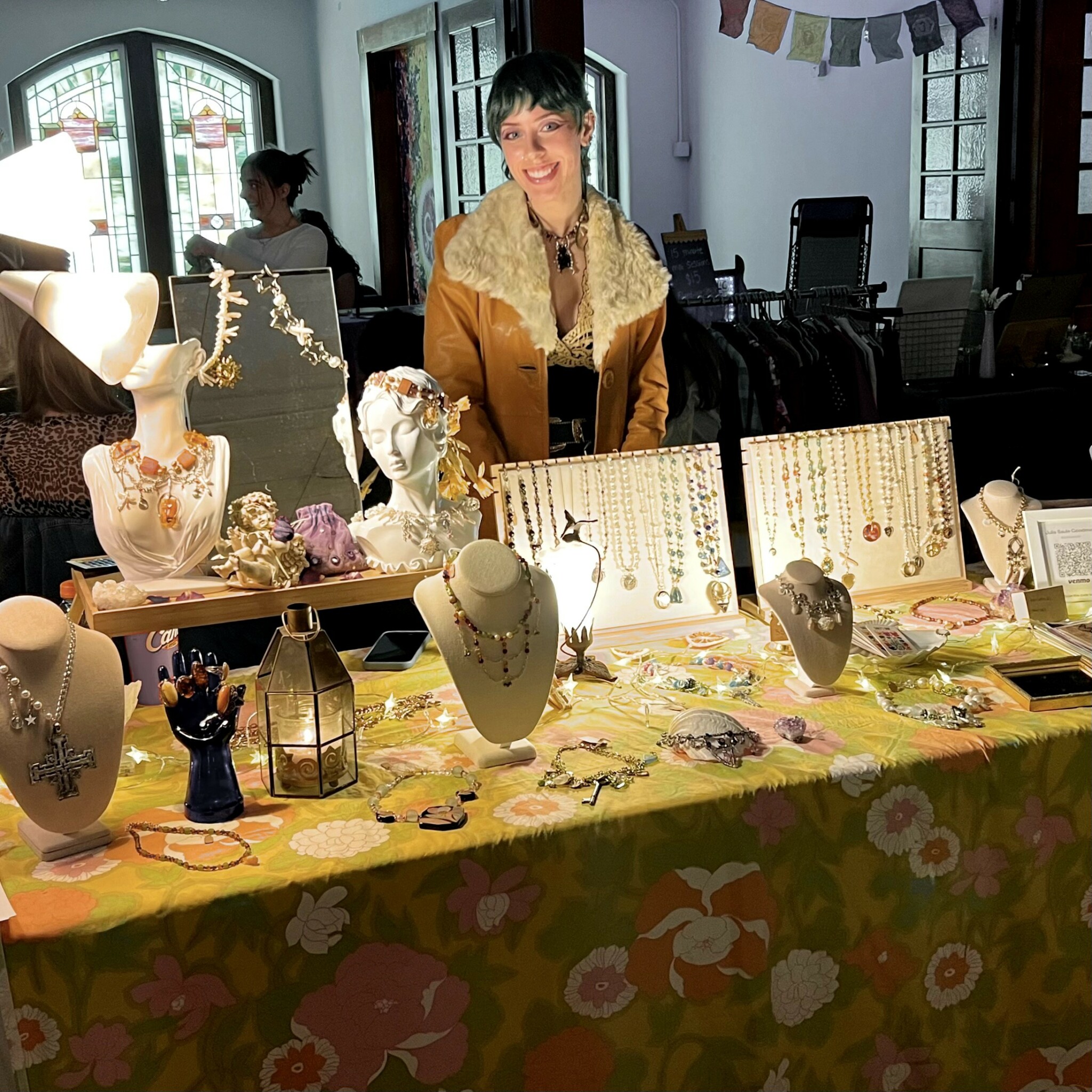
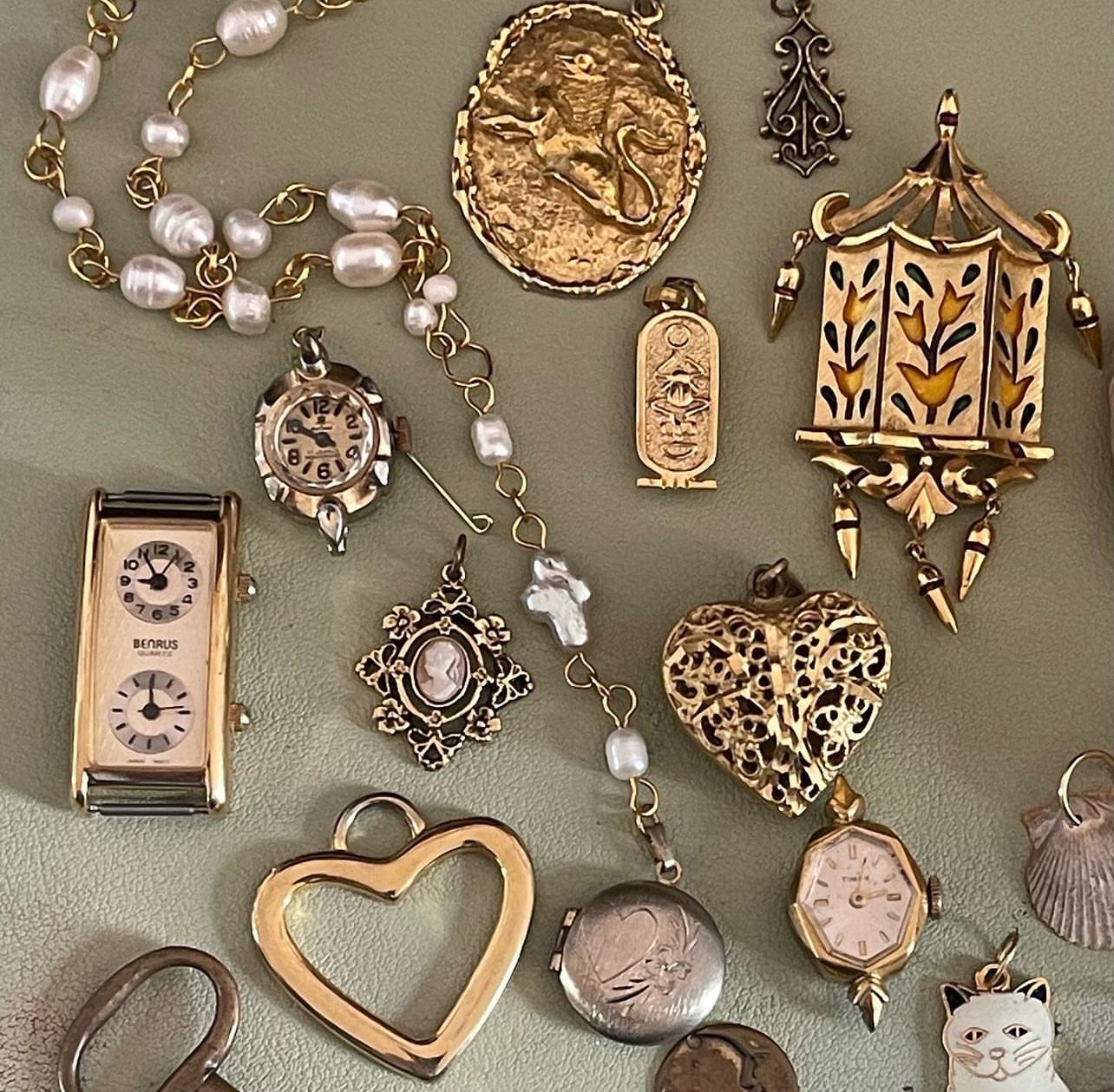
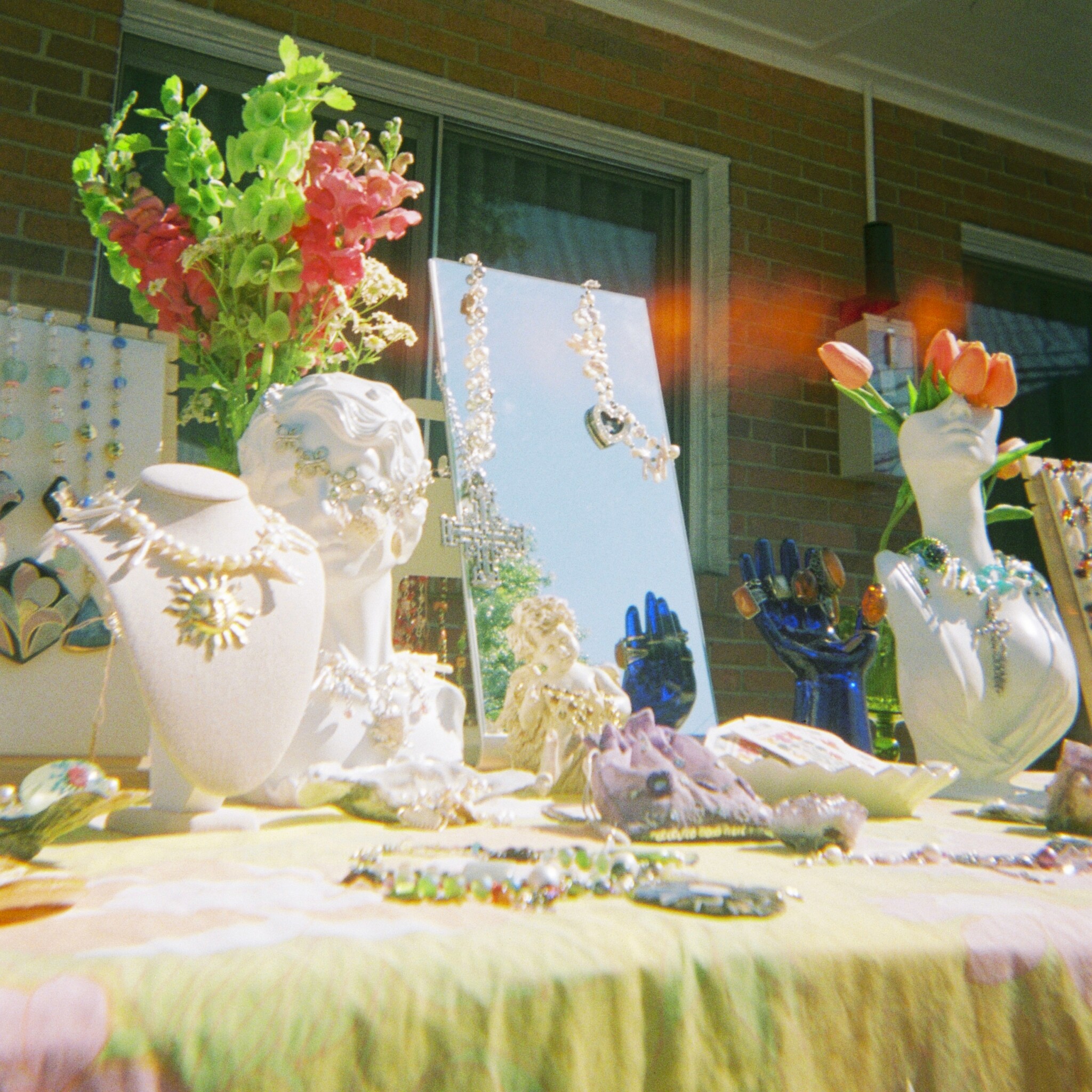

Image Credits
Bran Ramos
Jon Toland


